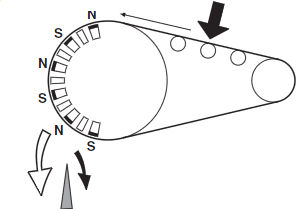By creating an environment comprimising a magnetic force (Fm), a gravitional force (Fg) and a drag force (Fd) magnetic particles can be separated from nonmagnetic particles by Magnetic Separation.
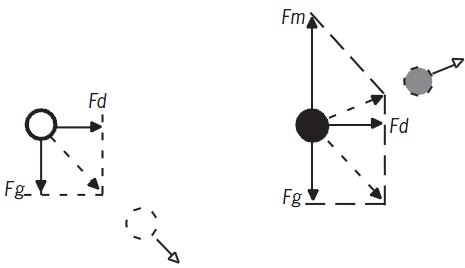
Magnetic field and magnetic gradient are equally important factors for creating the magnet attraction force.
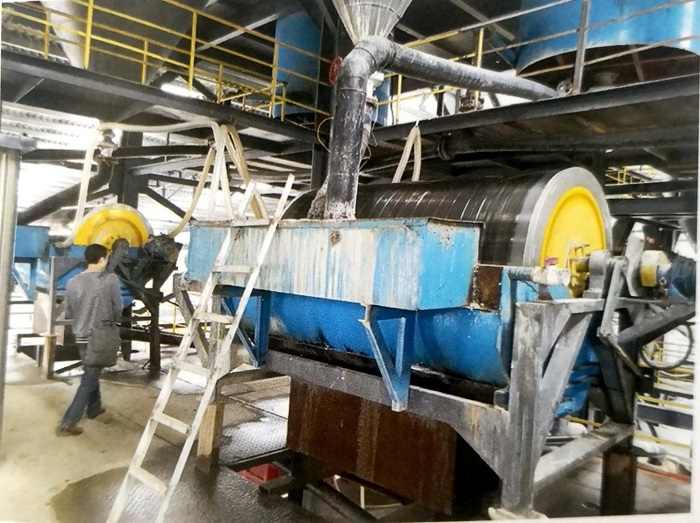
Magnetic Separation - Competing forces
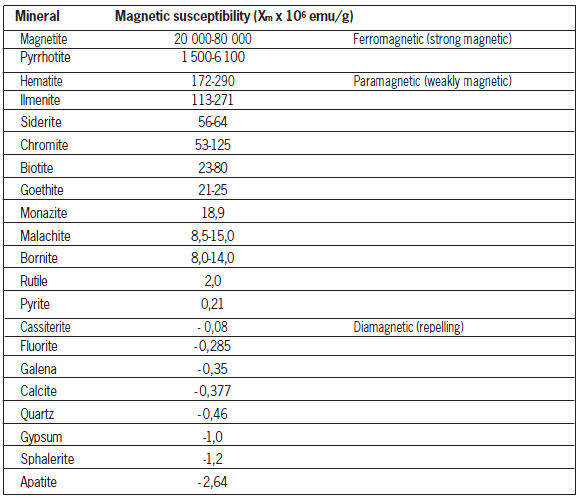
• Gravitational force (Fg) determined by particle size and particle density.
• Hydraulic force (Fd) for wet magnetic separators, determined by particle diameter, shape, liquid viscosity and velocity
• Centrifugal force (Fc) for rotating dry magnetic separators, determined by particle size, density and drum speed. (see dry LIMS below.)
• Air drag force (Fa) for dry magnetic separators, determined by particle size, density and air velocity.
Magnetic Separation - Separator Types
Wet Low Intensity Magnetic Separator
• Wet separation of ferromagnetic particles
• Magnetic field in separation zone * = 1-3 kGauss
* approx. 50 mm (2 inches) from drum surface
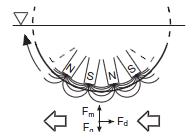
Wet High Gradient Magnetic Separators
• Wet separation of paramagnetic particles
• Magnetic field in separation zone* = 2-20 kGauss * on matrix surface
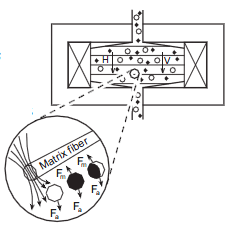
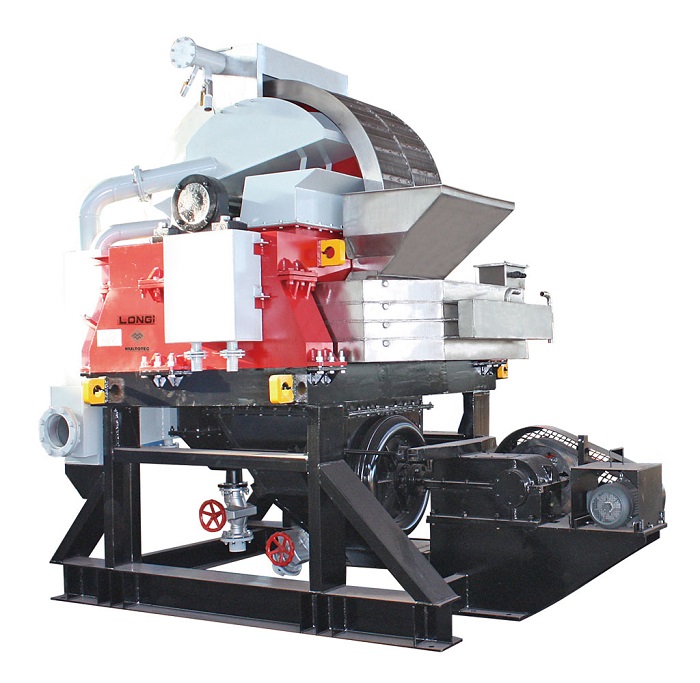
Dry Low Intensity Magnetic Separators
• Dry separation of ferromagnetic particles
• Magnetic field gradient in* separation zone = 1-3 kGauss* approx. 50 mm (2 inches) from drum surface
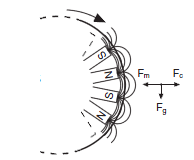
Dry High Gradient Magnetic Separators
• Dry separation of paramagnetic particles
• Magnetic field in separation zone* = 2-20 kGauss * on matrix surface
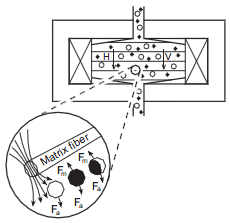
Wet Low Intensity Magnetic Separator –Concurrent
• Short pickup zone
• Coarse particle tolerant up to 6 mm- 0.2 inch (up to 20 mm - 0.8 inch with special tank)
• High capacities for low grade feeds
It is normally used as primary separation (cobber), "working horse" for large capacities and coarse feeds, mainly in iron ore industry.
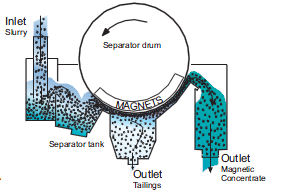
Wet Low Intensity Magnetic Separator –Countercurrent
• Long pickup zone = improved recovery
• Many pole passages = improved grade
• Self adjusting level control
• Coarse particle intolerant max 0.8 mm, due to sedimentation risk.
It used as: Rougher and finisher for multistage concentration of magnetic iron ore.
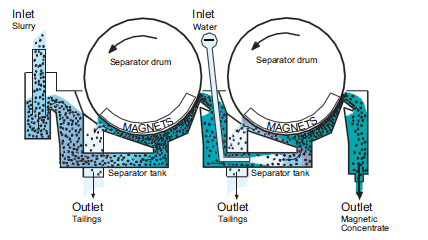
Wet Low Intensity Magnetic Separator –Counter Rotation
• Very long pickup zone
• Good separation with high recoveries
• For both low and high grade feeds
• Unsensitive for sedimentation, particles up to 3 mm can be separated
• Self adjusting level control
It used as: same as CTC above when sedimentation is at risk, mainly in the iron ore industry.
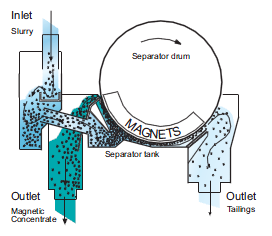
Wet Low Intensity Magnetic Separator –Dense Media Recovery
• Very long pickup zone
• For extremely high recoveries of very fine particles
• HG (high gradient) version available for high recovery from very dilute pulps
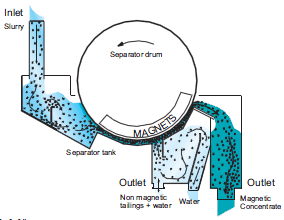
Dry Low Intensity Magnetic Separators- Drum Separator
• Alternating polarity with different pole pitches giving good recovery and grade
• Variation of drum speed 1-8 m/s (3 – 26 ft/s) gives metallurgical flexibility
• Not sensitive to particle size 0.01 - 20 mm
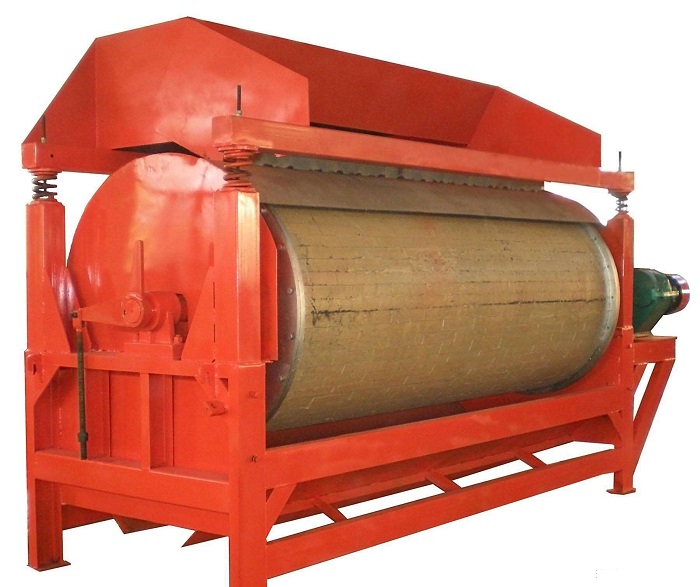
It can be used for separation of all types of dry ferromagnetic separation processes:
• Iron and steel slag treatment
• Reduced pyrite ash separation
• Calcined ilmenite production
• Iron metal powder production
• Magnetite or supergrade magnetite production
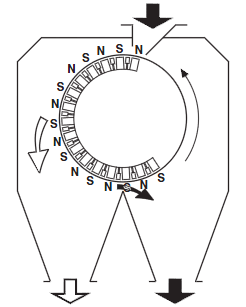
Dry Low Intensity Magnetic Separators-Belt Separator
• For coarse particles minus 200 mm
• Alternating polarity with different pole pitches giving good selectivity
• Rubber belt for protection of separator drum and even distribution of the feed
• Variable speed for optimal separation
